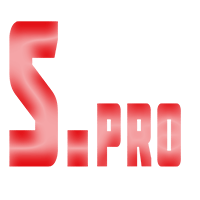Nonmanufacturing Overhead Spending in the Chemicals Industry Chemical production and investment cost
Content

That is why accountants refer to nonmanufacturing costs as period costs or period expenses. Note that all of the items in the list above pertain to the manufacturing function of the business. Rather, non-manufacturing expenses are reported separately (as SG&A and interest expense) on the income statement during the accounting period in which they are incurred. Manufacturing overhead includes the indirect materials and indirect labor mentioned previously.
Is salary an overhead expense?
Overhead costs can include fixed monthly and annual expenses such as rent, salaries and insurance or variable costs such as advertising expenses that can vary month-on-month based on the level of business activity.
ABC cost pools are created to correspond to the activities performed in an organization that cause the consumption of overhead resources. Therefore, the total number of ABC cost pools will definitely exceed one and it is likely to exceed the number of departments within a company , since more than one activity is often performed within each department. The document that records the materials, labor, and manufacturing overhead costs charged to a job is the ______. Factory overhead is any manufacturing cost that is not direct materials or direct labor. MasterCraft produces boats for water skiers and wake boarders.
Example of Gross Profit, COGS, and SG&A
There are three types of manufacturing production process; make to stock , make to order and make to assemble . There are three reasons why the reported product margins for the two costing systems differ from one another. Custom compass housings are https://www.bookstime.com/ assigning the remaining $125,000 (2,500 × $50) of manufacturing overhead. The denominator is the 20,000 machine hours used for the order size activity from the ABC system. The numerator is the $1,000,000 of manufacturing overhead shown earlier.
With direct labor being reduced and manufacturing overhead increasing, the correlation between direct labor and manufacturing overhead began to wane. A logical response was to begin allocating manufacturing overhead on the basis of machine hours instead of direct laborhours. In summary, Nonmanufacturing Overhead Costs product costs are not expensed until the item is sold when the product costs are recorded as cost of goods sold. Period costs are selling and administrative expenses, not related to creating a product, that are shown in the income statement along with cost of goods sold.
How do you calculate total manufacturing costs?
All nonmanufacturing costs are not related to production and are classified as either selling costs or general and administrative costs. The labor cost that can be physically and conveniently traced to a unit of finished product is called direct labor cost or touch labor cost. Examples of direct labor cost include labor cost of machine operators and painters in a manufacturing company. Like direct materials, it comprises of a significant portion of total manufacturing cost. Nonmanufacturing costs are necessary to carry on general business operations but are not part of the physical manufacturing process. These costs are represented during a period of time and are not calculated into the cost of good sold. Nonmanufacturing costs consist of selling expenses, including marketing and commission expenses and sales salaries and administration expenses, such as office salaries, depreciation and supplies.
Manufacturing overhead is those manufacturing costs that are incurred to a variety of products. It cannot be traced to individual products like depreciation and insurance of manufacturing equipment, cost of occupying, managing and maintaining a production facility. Manufacturing overhead is the cost that could be traced to individual product but it is not worth the trouble to like cost of lubricants and glue used. Manufacturing overhead also include cost that is more appropriately to be treated as cost of all outputs like overtime premium, cost of idle time, utilities cost. Non-manufacturing cost includes customer service, marketing and research & development cost. The traditional cost system allocates all manufacturing overhead costs using a volume-related allocation base (machine-hours).
Period Costs
Then, activity measures were identified, activity levels were determined, and activity rates were computed for each activity as shown earlier. These rates will be used in the next step to assign overhead costs to customer orders. Classic Brass makes two product lines for luxury yachts—standard stanchions and custom compass housings. The company has reported its first loss ever of $1,250 as shown on the income statement.
Standard stanchions consumed 17,500 machine-hours and custom compass housings consumed 2,500 machine-hours. All 400 product designs related to custom compass housings.
Introduction to Manufacturing Overhead
MANUFACTURING COSTS – these include all costs used in the manufacture of the products. When a company uses a departmental approach rather than a plantwide approach to applying overhead, the selling price of the product will always be ______. Multiple types of overhead are included to calculate the predetermined overhead rate. Direct materials costs are recorded on the job cost sheet when the ______. Which of the following is an incorrect statement regarding variances? A variance is a difference between budgeted and actual amounts.

The more valves are produced, the more parts Friends Company has to acquire. Therefore, parts have a variable nature; the amount of raw materials bought and used changes in direct proportion to the amount of valves created. For Friends Company, other direct materials would include, for example, plastic parts and paint. The following manufacturing items are for a construction company working on several custom homes. Identify whether each item should be categorized as direct materials, direct labor, or manufacturing overhead. Examples of direct materials for each boat include the hull, engine, transmission, carpet, gauges, seats, windshield, and swim platform.
Nonmanufacturing Overhead Costs
It is based on the assumption that – Number of employees is used for canteen cost. The assumption is when the number of employees increases, the canteen cost will increase. The fourth step is to compute the product margins—$615,750 for standard stanchions and $258,000 for custom compass housings.

Labor costs that are easily traced to a job are called ________ labor costs. A work-in-progress is a partially finished good awaiting completion and includes such costs as overhead, labor, and raw materials. Overhead costs are not included in gross profit, except possibly overhead that’s directly tied to production. Most items in the table above are self-explanatory, so they don’t require further explanation, while indirect materials and labor may benefit from further explication. Direct labor is the cost of wages to be paid to individuals who work on specific products or in other words, the cost of wages of employees who are directly involved in converting raw materials into finished goods. Product costs are treated as inventory on the balance sheet and do not appear on the income statement as costs of goods sold until the product is sold. Direct material costs are the costs of raw materials or parts that go directly into producing products.
The activities are often identified and defined by interviewing the employees that work in the respective overhead departments. The lengthy list of activities that emerges from this process is usually reduced to a handful by combining similar activities. As shown in the above table, each unit of Product X will be assigned $30 of overhead, and each unit of Product Y will be assigned $60 of overhead.
STEP COSTS – when activity changes , this cost changes by a certain level or step. DIRECT COSTS – refer to costs that are directly traceable to a cost object. When all of a company’s job cost sheets are viewed collectively, they form what is known as a ______. When all of a company’s job cost sheets are viewed collectively, they form what is known as a _______ __________. The document used to record the hours workers spend on each job and task is called a ______. An investment that cost $30,000 provided annual cash inflows of $9,000 per year for five years. The answer cannot be determined from the information provided.
Methods of Allocating Nonmanufacturing Overhead Costs
The traditional cost system disregards selling and administrative expenses because they are assumed to be period expenses. The ABC system directly traces shipping costs to products and includes nonmanufacturing overhead costs caused by products in the activity cost pools that are assigned to products.
- And Cost of Goods Sold are valued and reported according to generally accepted accounting principles .
- Allocations of manufacturing overhead to inventory and the cost of goods sold are required by generally accepted accounting principles .
- Product Designs – assigned all costs of resources consumed by designing products.
- Such minor items would include the solder used to make electrical connection in a Sony TV or the glue used to assemble a chair.
In entry 2, the depreciation on office furniture has been debited to depreciation expense because depreciation on office furniture or equipment is treated as period cost. If it were a depreciation on factory equipment, it would have been debited to manufacturing overhead because depreciation on factory equipment is treated as manufacturing or product cost.


